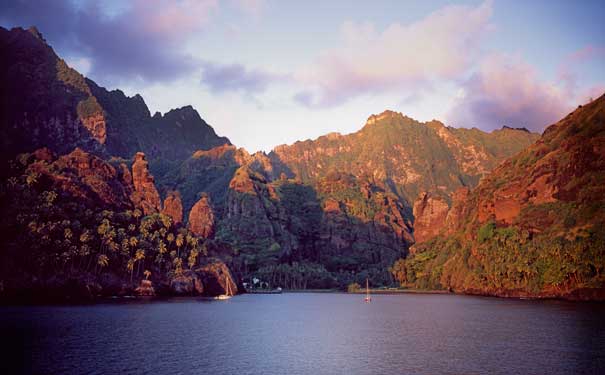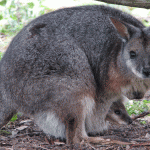
Image: Andrew Bell
Behind the rugged mountain walls of Tahiti’s outermost islands lies a vibrant community with an ancient culture.
The cargo-passenger ship Aranui voyages north from Tahiti every month on a fortnight’s odyssey to the six populated islands of the Marquesas Group. In doing so it allows adventurous travellers the romance of visiting a collection of outpost islands that is rich in travel lore. These are the islands of Gauguin’s last canvases, of Stevenson’s first South Sea stories and Melville’s fantasies. The Aranui carries up to two hundred passengers who are accommodated in a range of cabins from suites to budget, but it is the cargo in the ship’s hold and the tightly-stacked foredeck that is the lifeblood of the Marquesas. These are the goods necessary for the islanders’ sustenance and healthy development. It is for these that the Marquesans come down to the island docks, or paddle out to the idling ship’s side in whaleboats or pirogues.
For the passengers, there is a reward not just from the adventure of travel or the pampering of the ship’s galley and attentive stewards. There is a great satisfaction that comes with being part of a marine service that is vital to the well-being of the islanders. Without the income provided by the passengers’ fares, the cargo service would scarcely be sustainable. Once the voyage is underway, the serrated peaks of Tahiti and Moorea sink into the horizon beyond the Aranui’s wake. A day and a night’s steaming across the ocean brings up the immense scattering of coral atolls known as the Tuamotu Group. The Aranui enters the lagoon of Fakarava atoll and passengers go for a snorkel or stroll the coral shore, while longboats offload cargo for the atoll-dwellers.
Another day and night at sea, and the first of the islands of the Marquesas emerges in the dawn light. It is Ua Pou and the closer the Aranui gets, the more bizarre the island’s profile becomes ““ crazy basalt spires surround a central volcanic plug that rises 1200 metres into the morning sky. Two landings are made on Ua Pou, while passengers go ashore to explore waterfalls, village handicrafts and paepae (stone platforms), where evidence of ritualistic cannibalism in ancient times is seen in the placement of stone killing slabs.


















